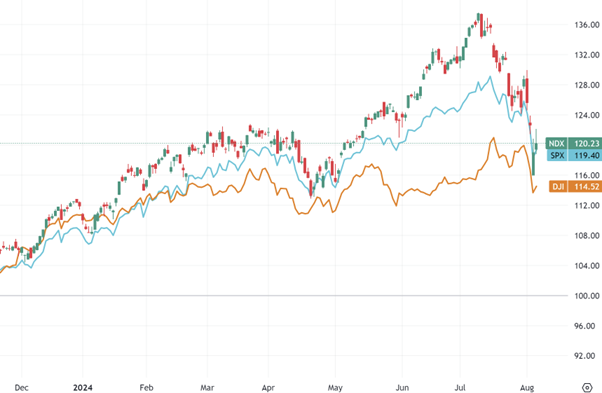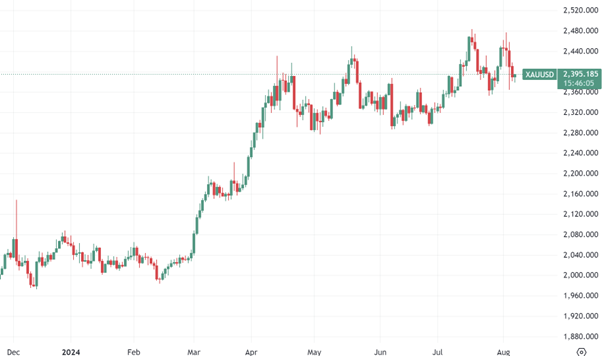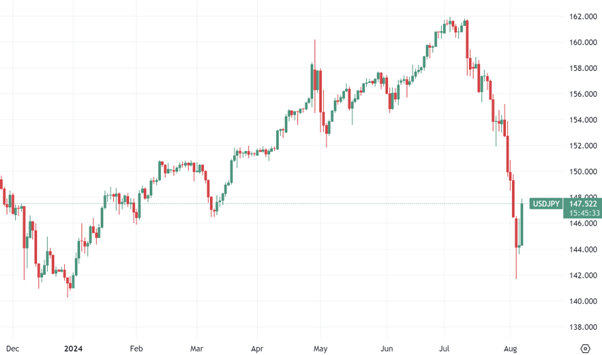Tech Stocks Lead S&P 500 Recovery Amid Economic Slowdown Concerns | Daily Market Analysis

Key events:
- USA - Crude Oil Inventories
- USA - 10-Year Note Auction
The S&P 500 closed higher on Tuesday as investors sought to capitalize on the previous day's selloff, particularly in beaten-down tech stocks. However, gains were capped due to ongoing concerns about an economic slowdown.
The Dow Jones Industrial Average rose by 293 points, or 0.8%, the S&P 500 increased by 1%, and the NASDAQ Composite gained 1%, though both the S&P 500 and NASDAQ were up more than 2% earlier in the day.

Tech stocks saw a boost led by a rebound in NVIDIA Corporation as bargain hunters bought into the previous day's dip.
Despite Nvidia's recovery, reports indicate that the chipmaker is facing delays in launching its Blackwell chip. Apple Inc., on the other hand, struggled to join the broader rally as investor sentiment remained dampened following Warren Buffett's decision to reduce his stake in the iPhone maker by nearly 50%.
Gold prices reversed an Asian session dip and climbed to the upper end of the daily range in the last hour, although they remained below the $2,400 mark. Expectations for significant interest rate cuts by the Federal Reserve, coupled with ongoing concerns about a US recession, economic slowdown in China, and geopolitical tensions in the Middle East, provided support for the precious metal.
The intraday bounce in gold prices, however, lacked strong momentum due to increased demand for the US Dollar, supported by a further recovery in US Treasury bond yields. Additionally, a generally positive tone in global equity markets contributed to capping the upside for gold prices. Nonetheless, the fundamental backdrop suggests caution for aggressive bearish traders.

The Japanese Yen continued its decline against the US Dollar for the second consecutive day, primarily due to remarks from Bank of Japan Deputy Governor Shinichi Uchida on Wednesday. Uchida stated, "We won’t raise rates when markets are unstable," according to Reuters. He also emphasized that BoJ's interest rate strategy would adapt if market volatility impacts economic forecasts, risk assessments, or projections. Given the recent market volatility, he stressed the need to carefully monitor the economic and price impacts of their policies, indicating that the current degree of monetary easing must be maintained for the time being.
However, the USD/JPY pair's upside potential might be limited due to the challenges faced by the US Dollar, as markets anticipate a more significant rate cut beginning in September.

The Australian Dollar advanced against the US Dollar for the second consecutive session on Wednesday, buoyed by the Reserve Bank of Australia's decision to keep the Official Cash Rate steady at 4.35% for the sixth straight time. RBA Governor Michele Bullock emphasized the persistent risk that inflation could take too long to meet target levels, indicating that interest rates might need to remain elevated for a prolonged period. She dismissed the possibility of a near-term rate cut as misaligned with their current policy. However, second-quarter inflation data has lowered the likelihood of another RBA rate hike, with markets now forecasting a rate cut in November, earlier than the previously expected April of next year. The AUD/USD pair may see further gains as the US Dollar is pressured by expectations of a more significant rate cut beginning in September, following weaker US employment data in July that ars of an impending recession in the US.

The GBP/USD pair rebounded from recent losses, trading around 1.2710 during the Asian session on Wednesday. This recovery was driven by a softer US Dollar amid rising expectations for a more aggressive rate cut starting in September, following disappointing US employment data in July, which increased recession fears. Federal Reserve Bank of San Francisco President Mary Daly noted on Monday that risks to the Fed's mandates are becoming more balanced, indicating a potential openness to rate cuts in future meetings. Similarly, Chicago Fed President Austan Goolsbee stated that the central bank is ready to act if economic or financial conditions deteriorate.

t
Conversely, the British Pound faced hurdles as the Bank of England executed a widely anticipated 25-basis point rate cut at its August meeting. Market sentiment now includes the possibility of two more quarter-point rate cuts by the BoE by December. The Pound's upward momentum could be limited by general risk aversion, exacerbated by escalating Middle East tensions following Hezbollah's missile attack on Israel in response to the Israeli airstrike in Tehran that killed Hamas leader Ismail Haniyeh.









